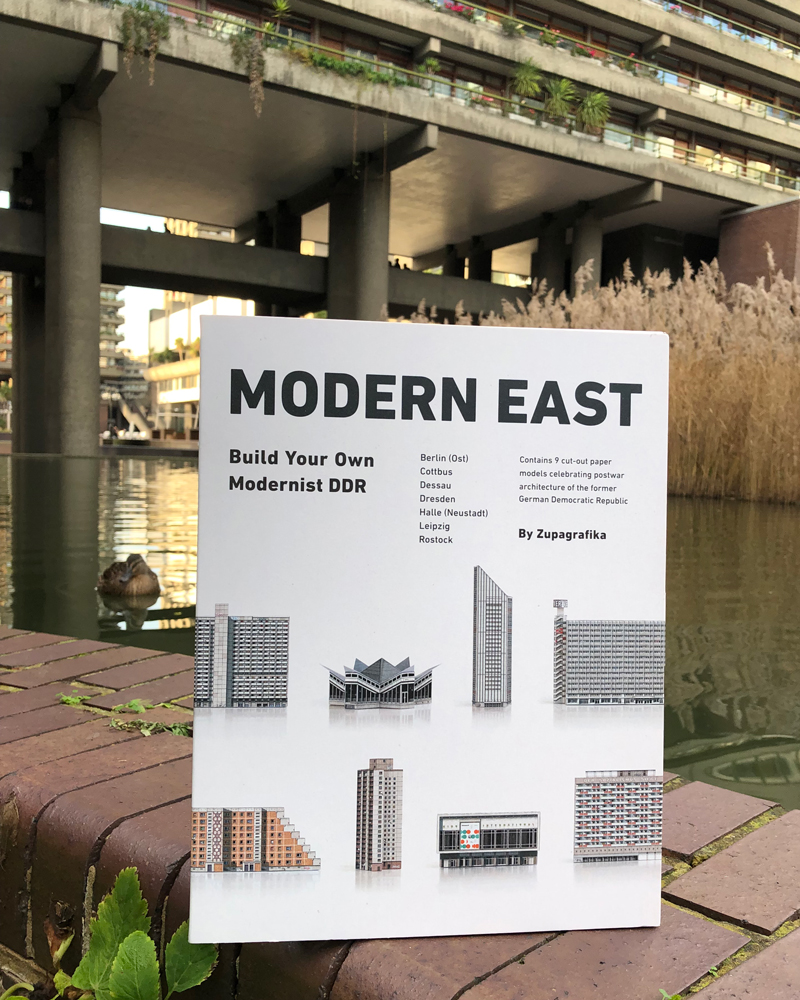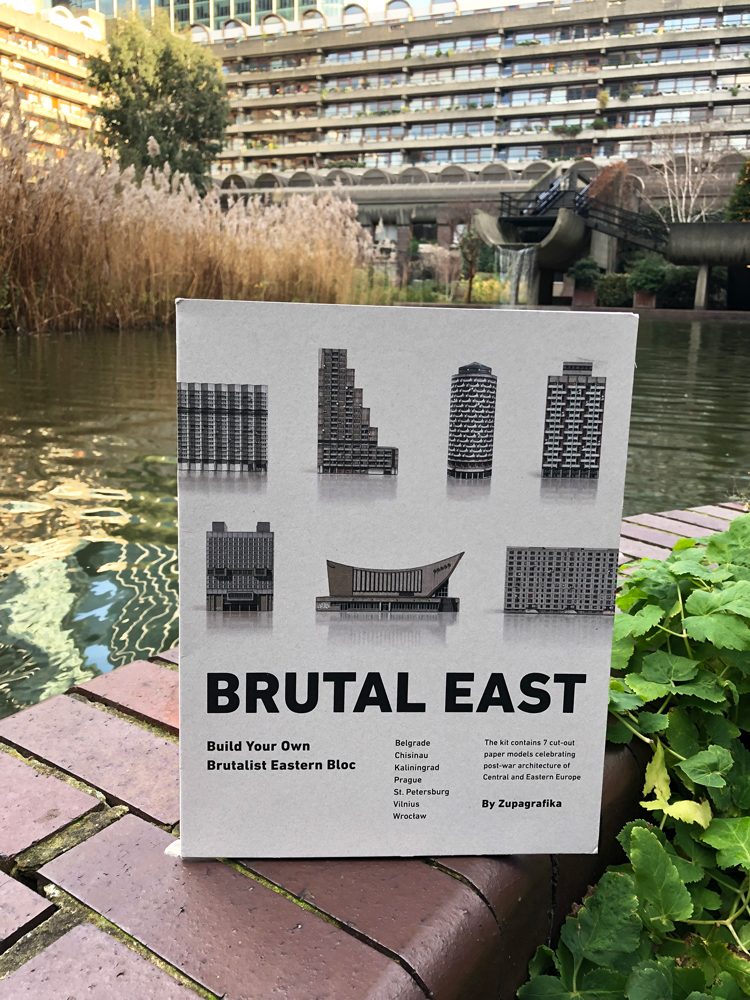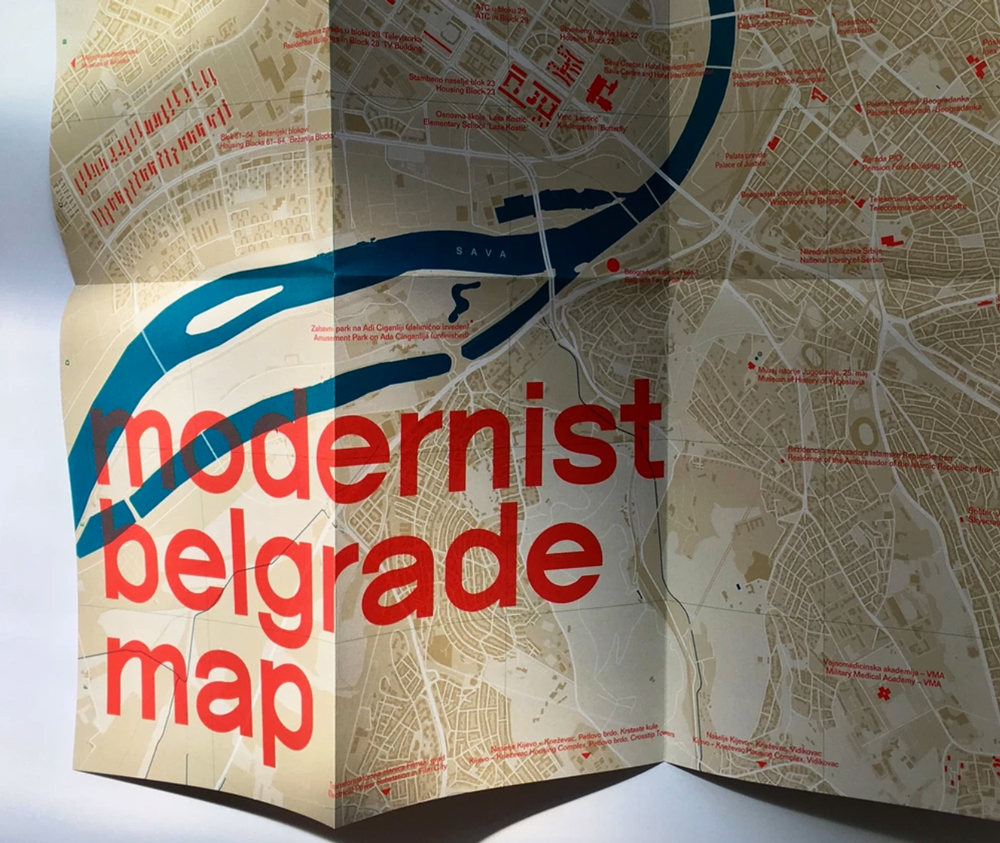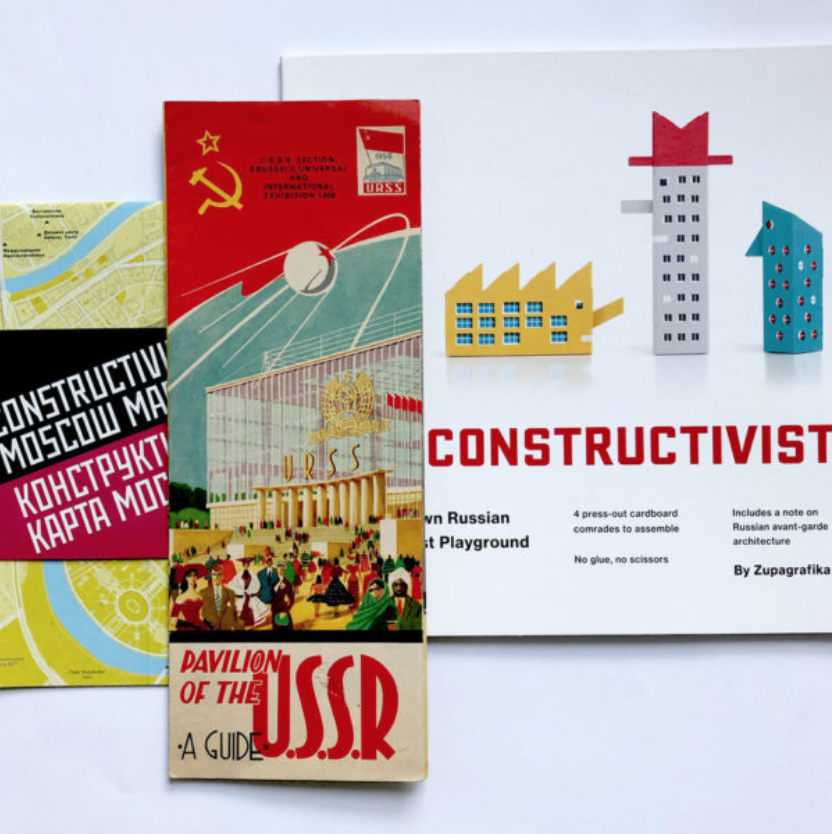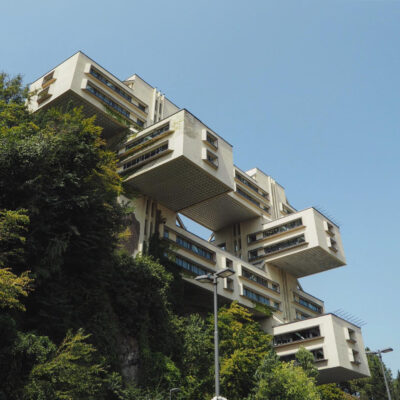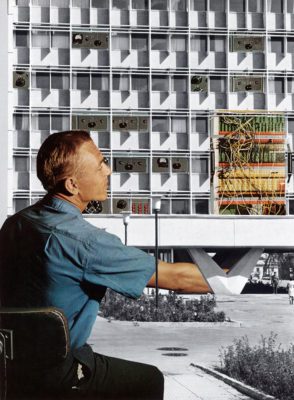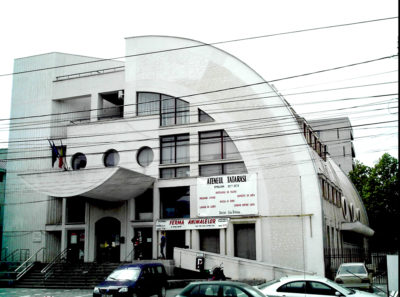A Journey through Modernist Architecture in the former Yugoslavia
We don’t need too much of an excuse to explore the region – packed with physical manifestations of a tumultuous history filled with cities ‘taken’ by one group and won back by another. It’s lineal – hard to pinpoint where it began and where it will end.
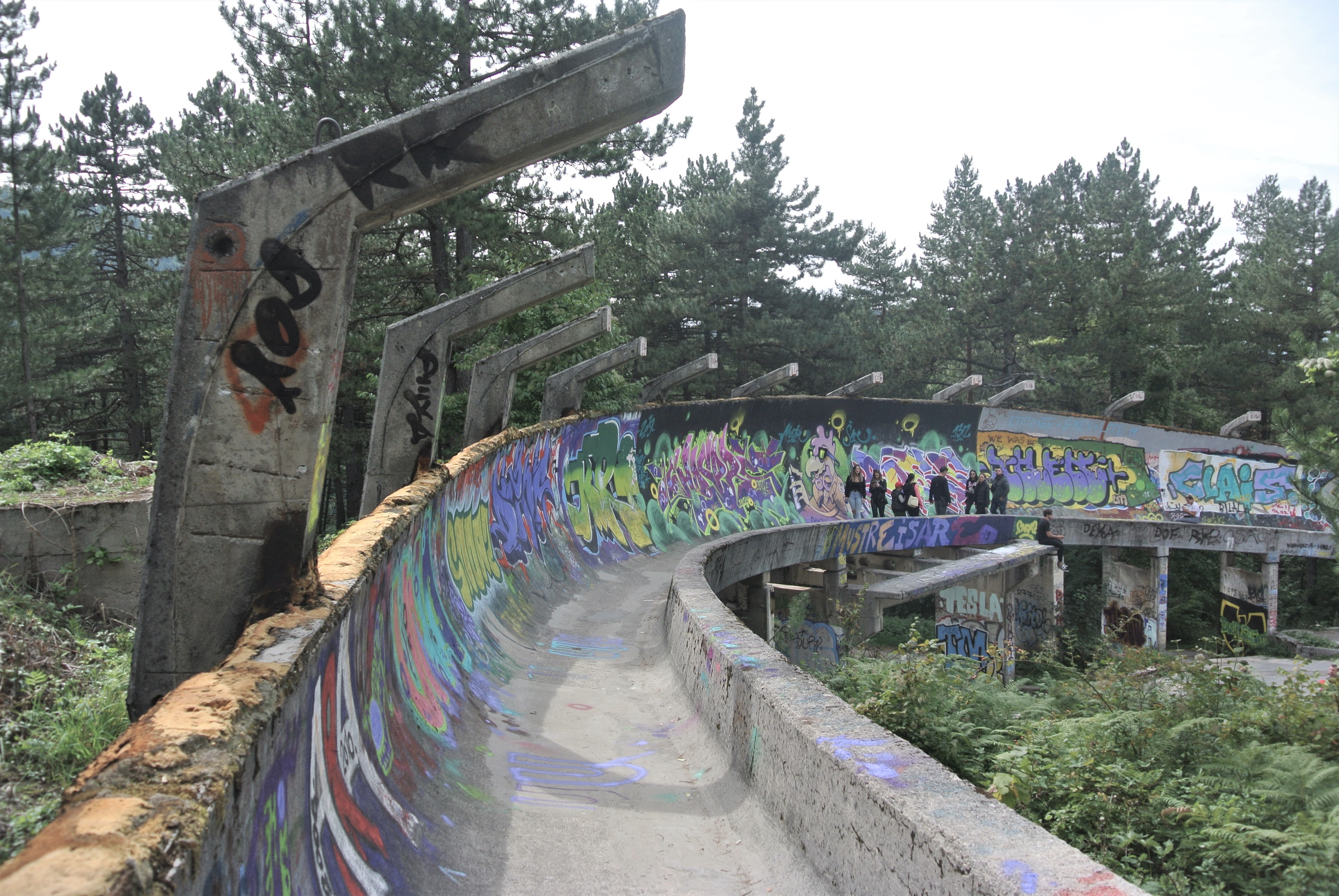
Sarajevo, 1984 Olympic Bobsleigh & Luge Track
To say Ian Lo is well travelled is an understatement. A Singaporean via Hong Kong, who studied urban planning in Melbourne and London, with a stretch in Ukraine in 2012/3. Now with multiple trips to the former Yugoslavia, East-Central Europe and many post-Soviet states under his belt – he’s ‘visited 57 countries and counting!’ All-in-all Ian’s crisscrossing from Europe to Asia and beyond has given him a unique perspective.
Last Autumn Ian grabbed the opportunity to go on the ultimate Balkans trip, with stop-offs in Sarajevo, Belgrade, Bor, Podgorica and Pristina, – ‘taking in the architecture and the emotions they evoke, firsthand’. Ian shared with Greyscape his fascination with how the evolving regional transformation, after the fall of Socialism, has played out through architecture’.
‘Imagine that time when the former Yugoslavia was presenting itself as a Modernist utopia. Created in the mid 20th century in the heart of continental Europe, its architecture the embodiment of post-World War II euphoria with a socialist twist. What remains today are the remnants of that utopian vision, the fall of Socialism has cast a long shadow. Too many buildings and monument are in various states of decay, abandonment or worse, already destroyed. Misunderstood and derided as soulless, intimidating or ugly, they have suffered from a lack of appreciation, repair and funding. The scars from recent events such as war or economic downturn are also clearly visible. I’m one in a growing, but still, niche group of people who want to acknowledge, map and bring attention to these buildings.’
‘Yugoslavia was strategically non-aligned between the East and West during the Cold War. This allowed its architects to be in touch with the architectural styles of both sides of the Iron Curtain, you can see Western Europe, North America, and Japanese influences. Some had the experience of either studying or working abroad. Yugoslavia and the USSR were often incorrectly conflated, but Yugoslavia had already broken with the USSR in 1948. While the USSR was churning out mass-produced standardised housing blocks, Yugoslav architects were given the freedom to experiment and many buildings were the result of competitions – what that created was great diversity in architectural styles across the federation.’
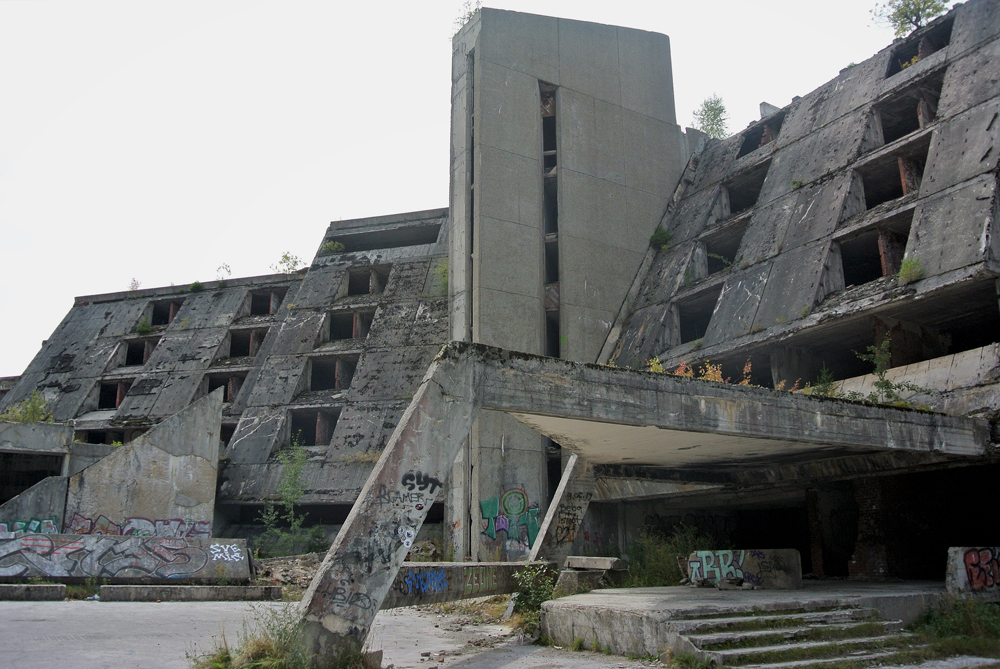
Abandoned Hotel Igman outside Sarajevo
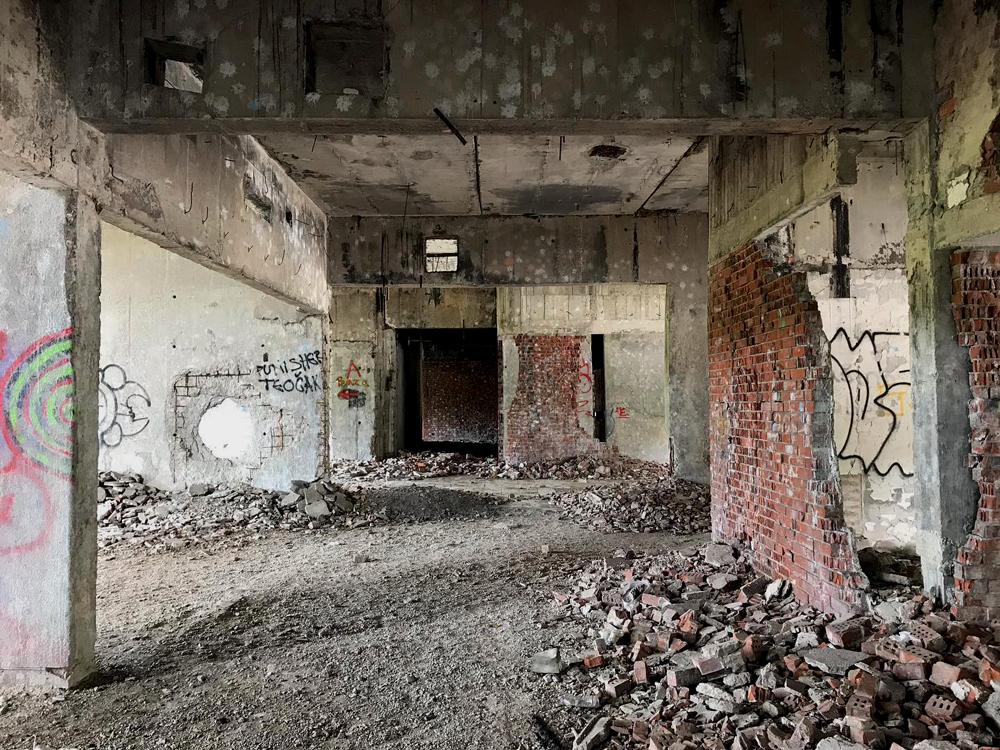
Hotel Igman
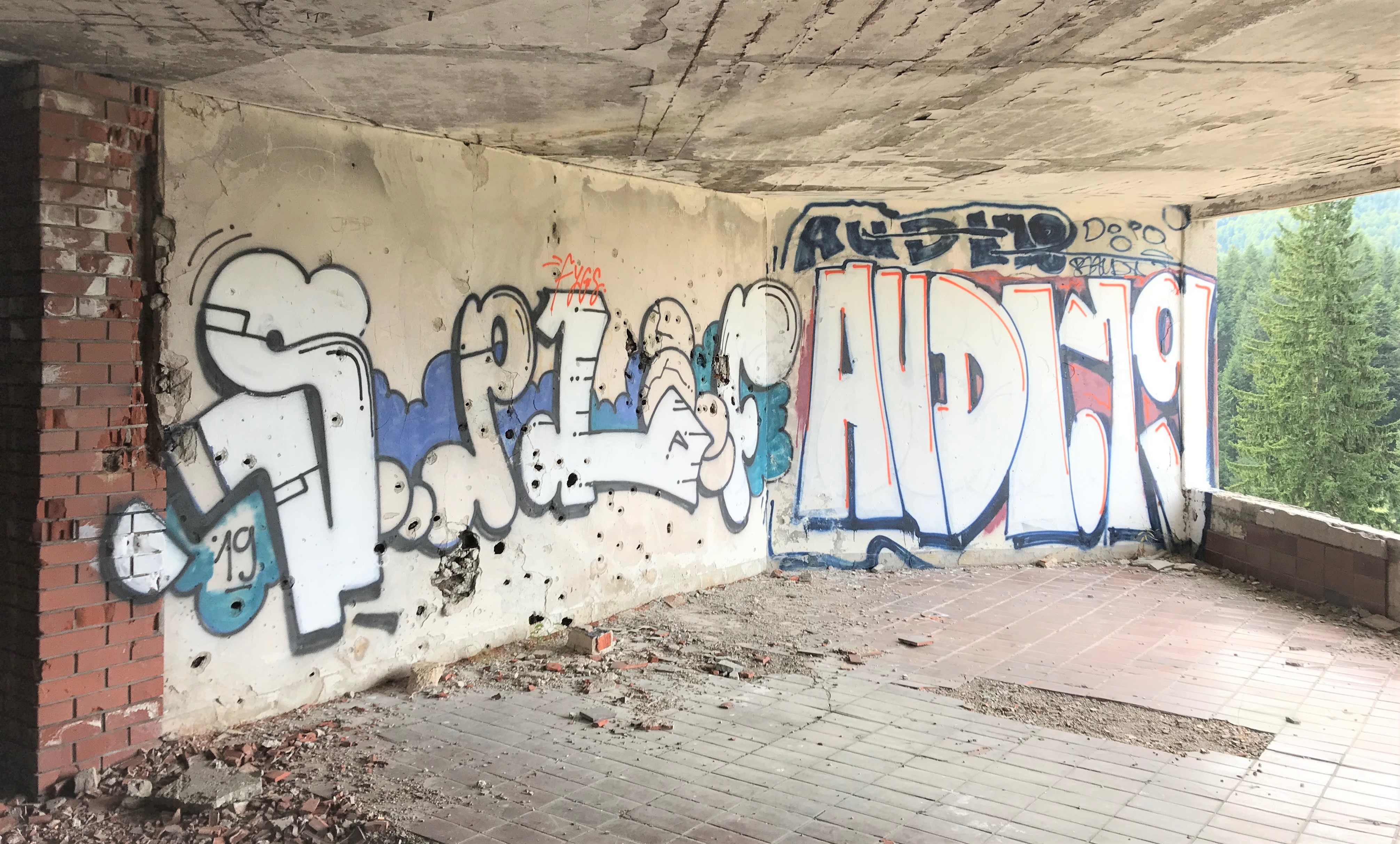
Upper Floor of the abandoned Hotel Igman
Visiting Sarajevo
‘The name alone conjures up so many images whether it’s a war-torn city under siege, the Michael Winterbottom film, the proud hosts of the Olympic games or where Archduke Franz Ferdinand of Austria was assassinated triggering the catastrophic First World War.
Built along a valley, Sarajevo was founded by the Ottoman Empire in the 15th Century. It expanded westwards after being incorporated into the Hapsburg Empire in the late 19th Century, and again when it was part of Yugoslavia. What resulted is a modern-day Sarajevo which is distinctly split into three historic districts from east to west.
In 1984 Sarajevo was on everyone’s TV screens. It was the first time a Socialist country hosted the Winter Olympics. Less than a decade later in 1992 the Bosnian war put an, under siege, Sarajevo at the centre of attention again. The siege would last for three years and eleven months, the longest in modern history. The politics are incredibly complex. What I was looking at were the physical manifestation. You come up against it quickly, for example, evidence of the destruction of various Winter Olympic facilities. One of these was a luxury hotel close to the Igman ski slopes in Malo Polje, 30km west of Sarajevo. Today the slopes of Mount Igman are barely used and Hotel Igman remains abandoned – a raw concrete shadow of its former self. It is sometimes incorrectly described by fans of concrete as Brutalist which would be wrong – its current state belies its original design by Ahmed Džuvić.
It was a chilling experience to walk up to the top floor negotiating my way through bricks, concrete, shattered glass and graffiti. It’s still possible to imagine how impressive this place must have felt in 1984 and how lively it would have been during the Games. Squint and you can see the atrium, visualise the restaurants, the lift lobbies, swimming pools and hotel rooms. Sarajevans must have been so proud to host a global event (and so relieved when the snow finally fell the night before the games commenced). Today, most of the walls are still standing, although the removal of bricks is clearly evident and the lift shafts have been emptied.
The 1984 Sarajevo Winter Olympics bobsleigh tracks on Mount Trebević were also shelled and bullet-ridden during the siege. Although the tracks are often depicted as a dilapidated, quiet and forgotten place, I experienced the opposite. When I visited it on a weekend afternoon, the tracks were full of people – teenagers, families with children, couples. They are beautifully adorned with colourful street art. Occasionally, they are used by luge athletes, although probably not on weekends when there are so many people around.
The tracks are a short drive from the city. You could also ride the recently-reopened cable car up the hill from the city. Near the tracks, you’ll be offered a panoramic view of Sarajevo.
Ciglane
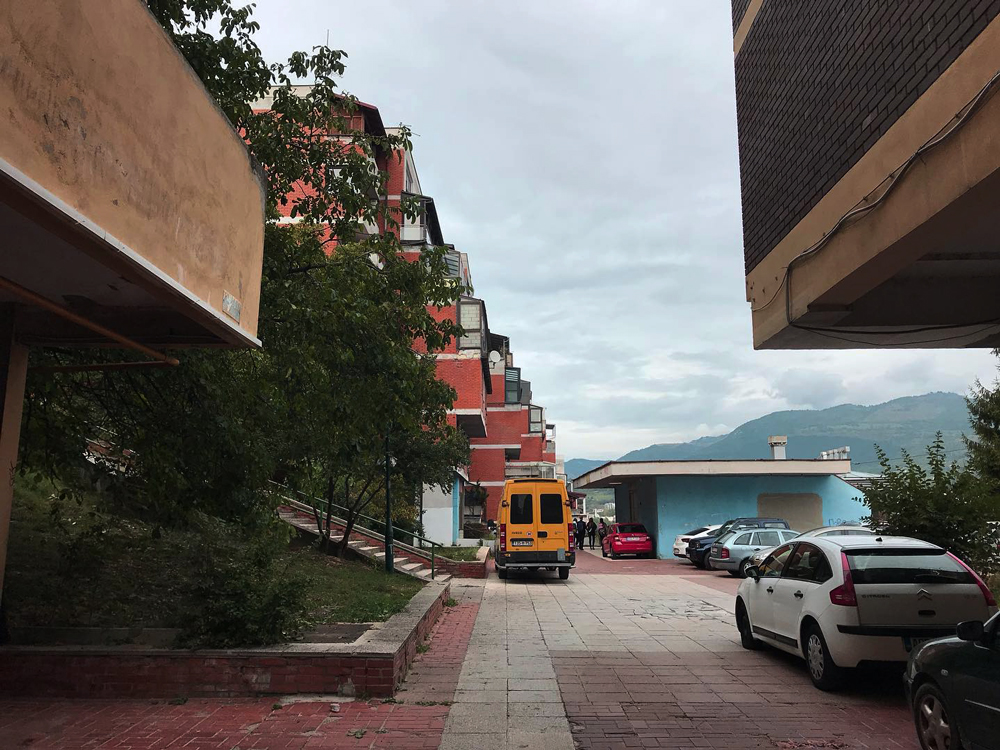
Ciglane with a view towards Sarajevo

Naselje Đuro Đaković Housing Estate Sarajevo
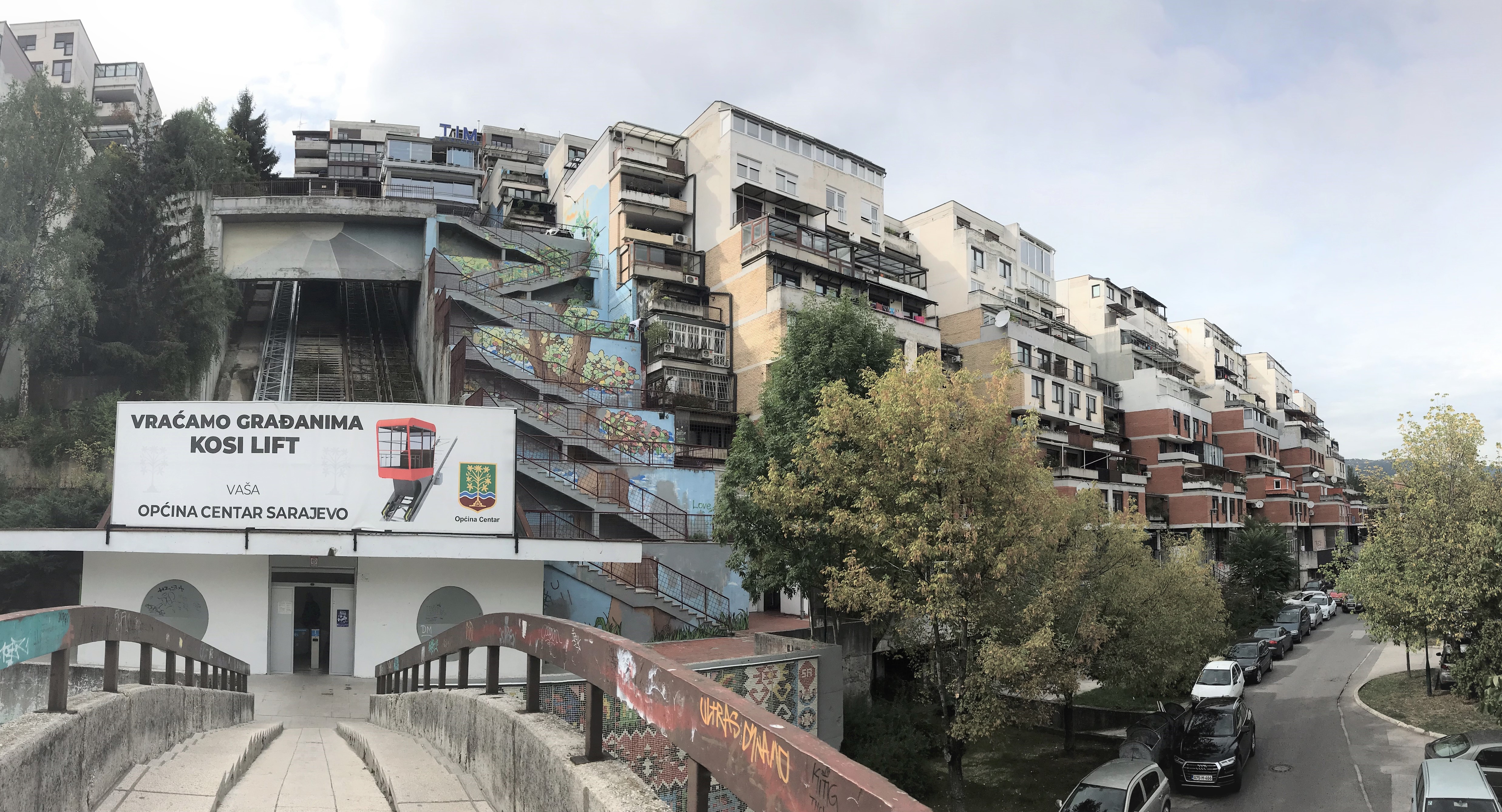
Naselje Đuro Đaković Housing Estate and Funicular
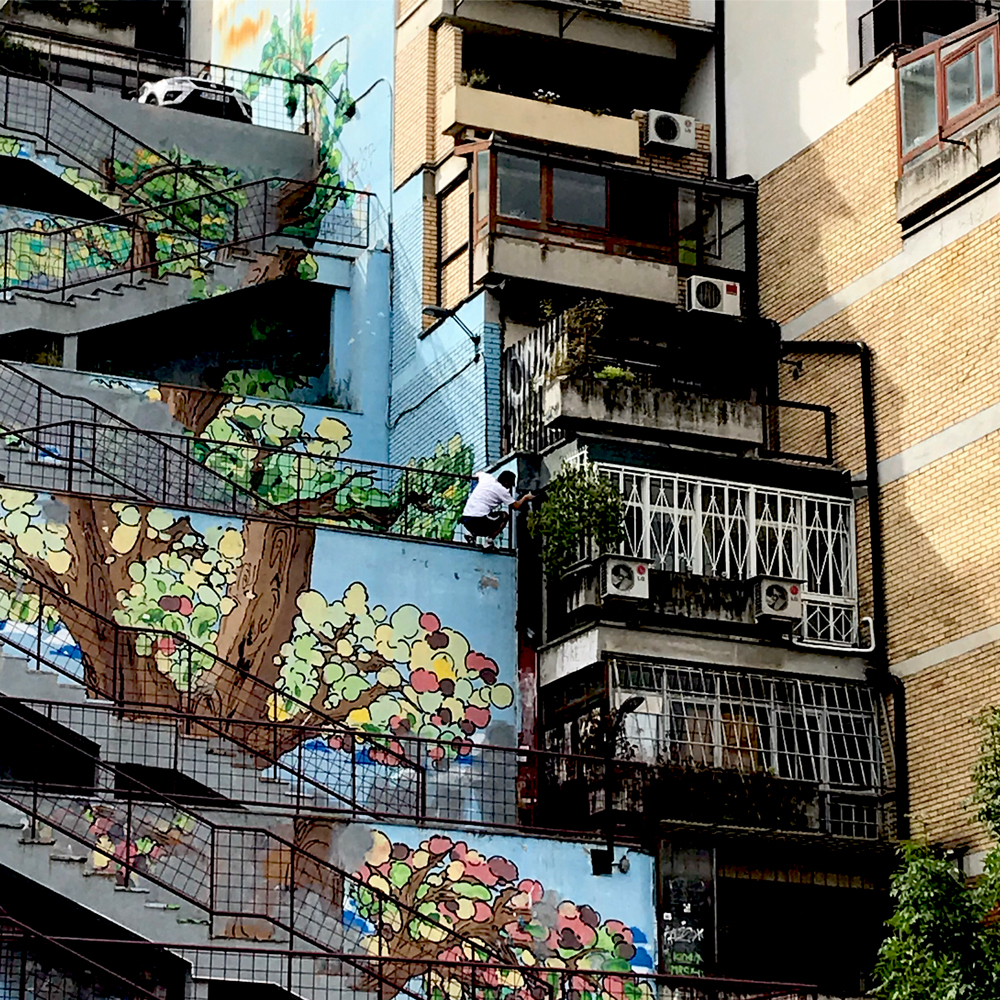
Ciglane, Sarajevo
Just north of central Sarajevo is Ciglane home to a unique terraced hill-side residential estate, Naselje Đuro Đaković. Built between 1976 -1989 and designed by Radovan Delalle (who had studied in Zagreb and Paris), the complex is split into three tiers, linked by a new, modern funicular which seems to have replaced the older vehicles still parked at the top. I highly recommend taking it to the highest level and to take the time to wander aimlessly around the apartment blocks to experience them. They were meticulously designed at a human scale. There is enough open space between the buildings and the medium-rise blocks do not overwhelm you. Each ride costs 0,50 convertible marks (€0,25) – make sure you have coins. It is a viable alternative to walking up the steps or driving up the hill.
Novi Beograd (New Belgrade)
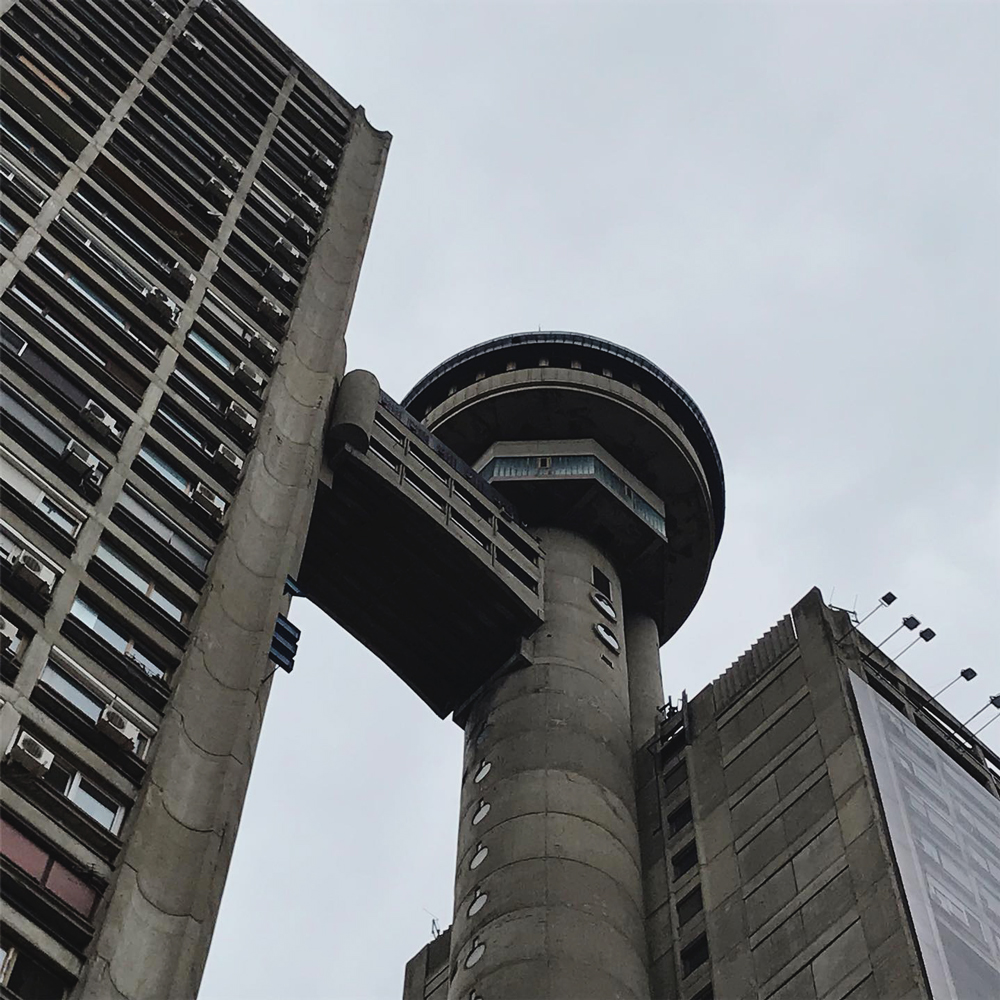
Genex Tower, Novi Beograd
A large residential district developed from scratch post-war opposite the old city on the left bank of the River Sava. It is made up of numerous high-rise residential mapped blocks ‘blokovi’, each with its own design and character. Probably the largest representation of Yugoslavia’s utopian vision for a modern, rising state after WWII, it aimed to provide high-quality housing for all, regardless of profession or class.
I wanted to take aerial photos of Novi Beograd before my Sarajevo-Belgrade flight landed, so I chose the perfect seat (it’s 8F!) on the daily Air Serbia turboprop – only to be disappointed by the thick cloud cover that made it impossible to see anything:)
I chanced upon the concrete playground that’s making its rounds on Instagram. It’s in Blok 22, on a podium raised above a semi-basement car park opposite Sava Centar, a huge convention centre located in Blok 19 – I highly recommend visiting it too.
A photographer’s favourite, the Genex Tower lives up to expectations. It is a magnificent 36-storey Brutalist commercial/residential building. Truly one of Novi Beograd’s most iconic buildings and it’s clearly visible as you approach the city from the airport.
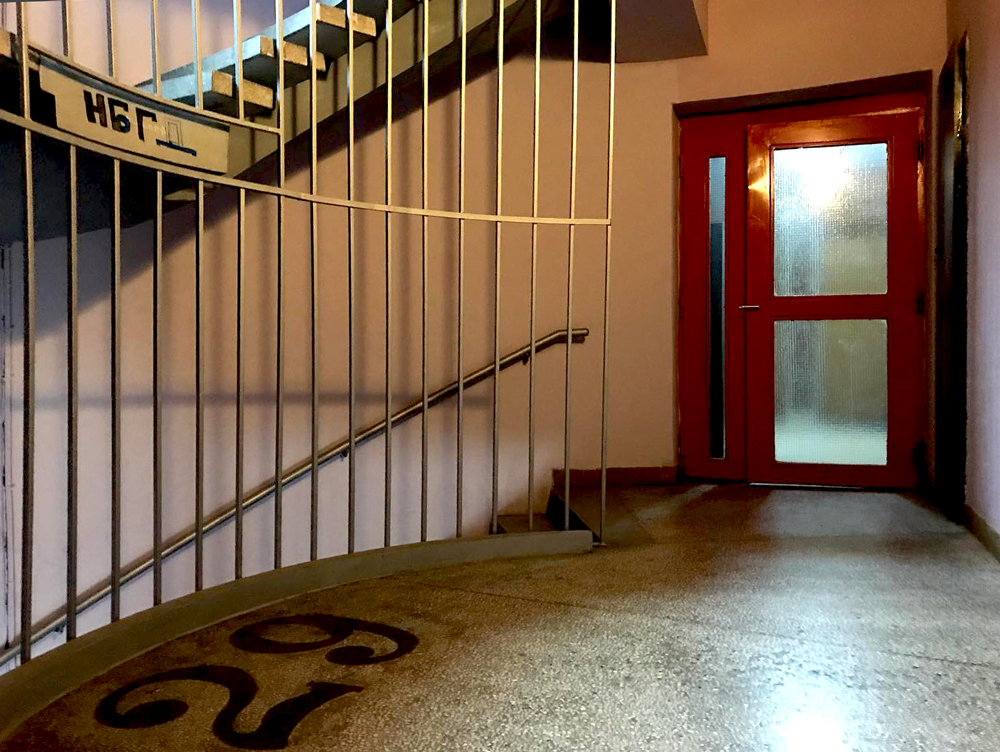
29th Floor Genex Tower, Belgrade
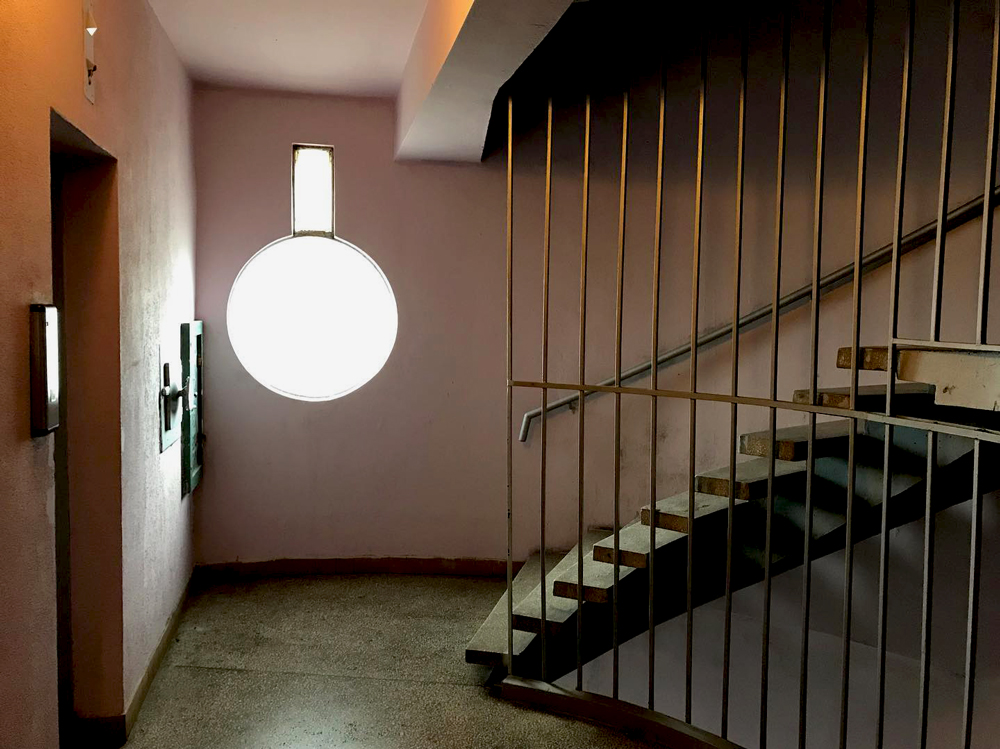
29th Floor Genex Tower
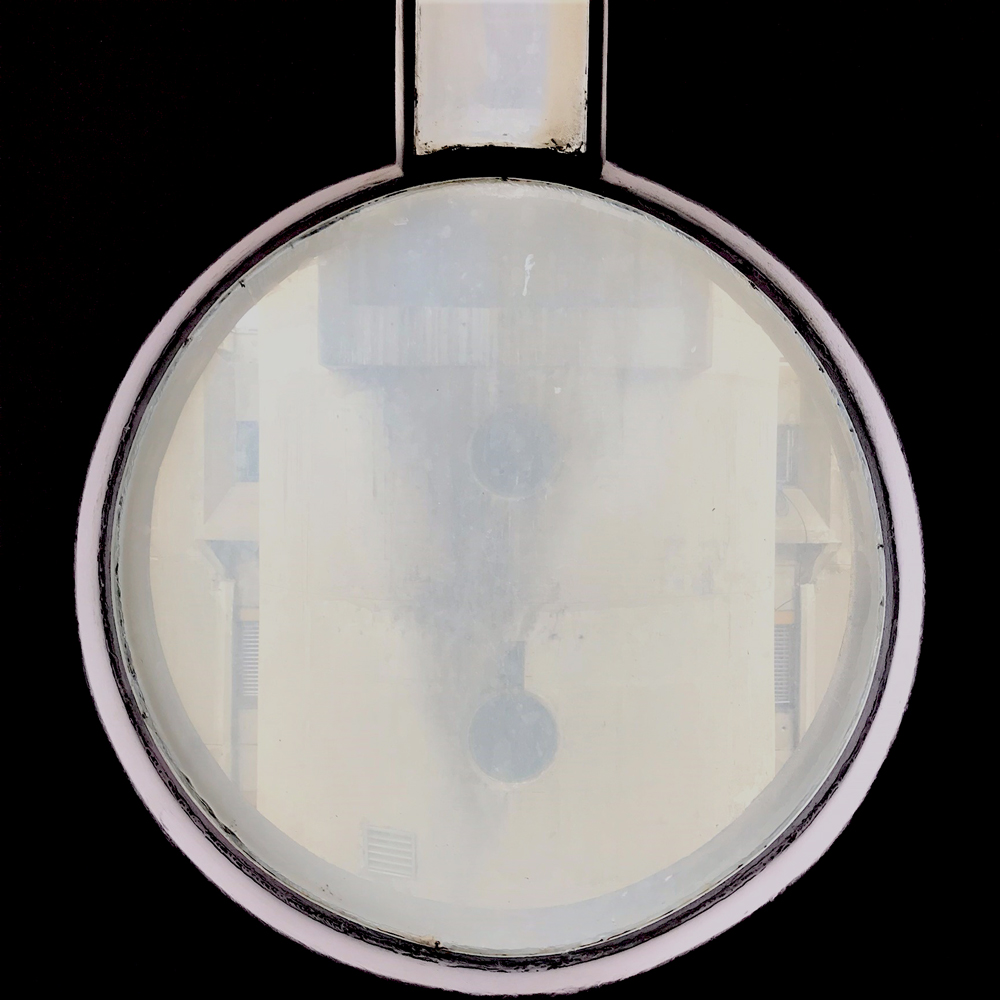
Through a misty window from within the Genex Tower
Bor
A small copper mining town three hours drive from Belgrade in eastern Serbia and definitely not part of most people’s itinerary, I found myself there during a field trip as part of a university conference. Its copper deposits played an important role during WWII.
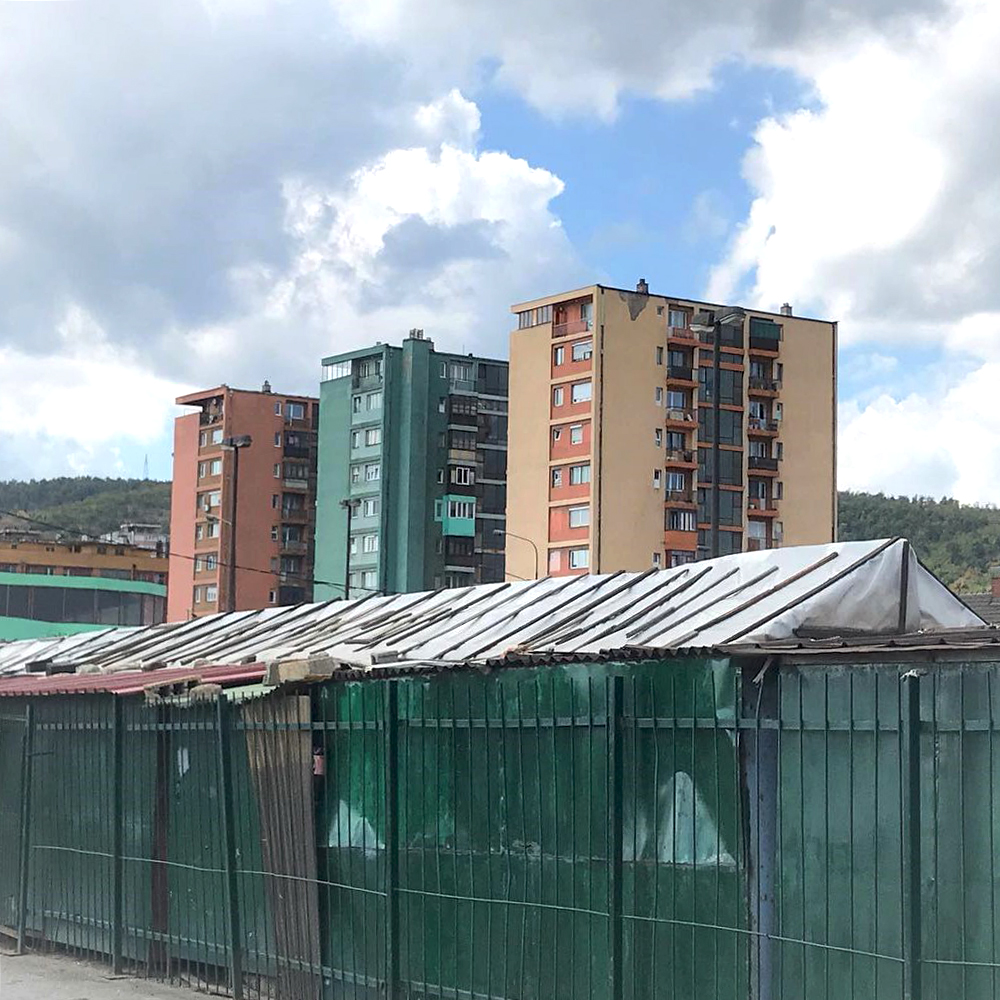
Bor, Serbia
Belgrade to Bar Railway
As a railway fan, I couldn’t miss the Belgrade to Bar railway. Completed in 1976, the 11-hour, 476km journey snakes through and climbs up and down the spectacular mountains and valleys of Serbia, and Montenegro. It passes through 435 viaducts and 254 tunnels, and a small detour into Bosnian territory before reaching the port of Bar, Montenegro on the Adriatic coast.
At €24, this scenic railway is very friendly on the wallet. However, it wasn’t meant to be a scenic railway – it was a nation-building project to link up the isolated interior with the sea. Nevertheless, I’m sure the train has seen better days. The windows are somewhat stained with dirt and graffiti which makes it difficult to appreciate the scenery outside. By no means is railway a popular mode of commute in this region where bus rides are the norm – the train was only about a third full.
I found out the hard way that there isn’t any food sold on board the train, so remember to stock up on snacks or sandwiches before the 11-hour journey. I didn’t – I was compelled to ask the very nice elderly couple who shared my second-class cabin for food.
Užice, Western Serbia
Nothing interested me as much as the Hotel Zlatibor did – it is on the right-hand side of the train right after it leaves Užice station. Its bold, linear and Brutalist design resembles a rocket ready to take off anytime and stands out from Užice’s low-medium rise townscape. It was designed by Svetlana Kana Radević, Montenegro’s first female architect. She had worked or studied in the US, France, the USSR, and Japan, where she was under Kisho Kurokawa who designed the now-famous Nakagin Capsule Tower in Tokyo. Perhaps this influenced the design of Hotel Zlatibor?
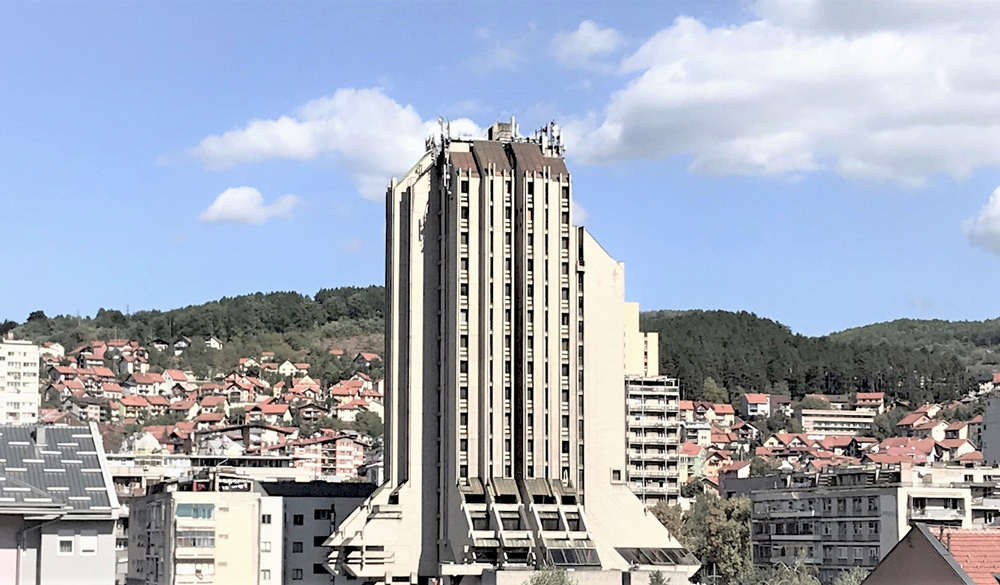
Hotel Zlatibor, Uzice
Podgorica
After spending two days in Budva on the Adriatic coast, I took a bus inland to Podgorica and set aside a few hours to explore Montenegro’s capital city, which isn’t a particular tourist destination. Its Modernist new town drawn out on a grid with Trg Nezavisnosti (Independence Square) in its centre, is worth a flying visit.
Pristina
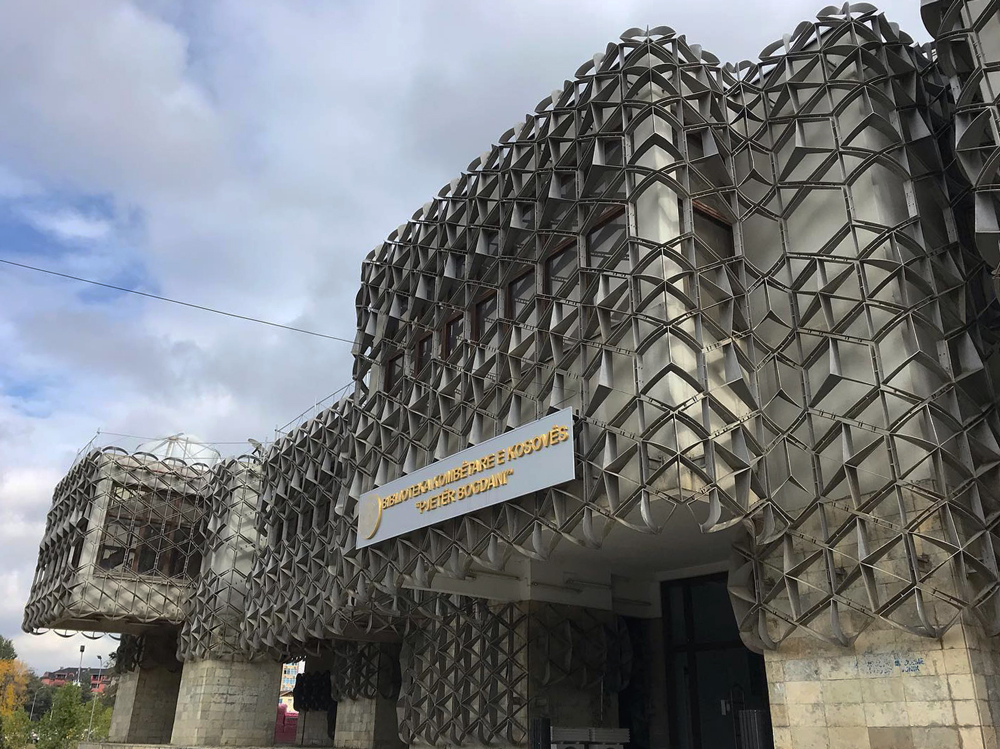
National Library of Kosovo Image Ian Lo
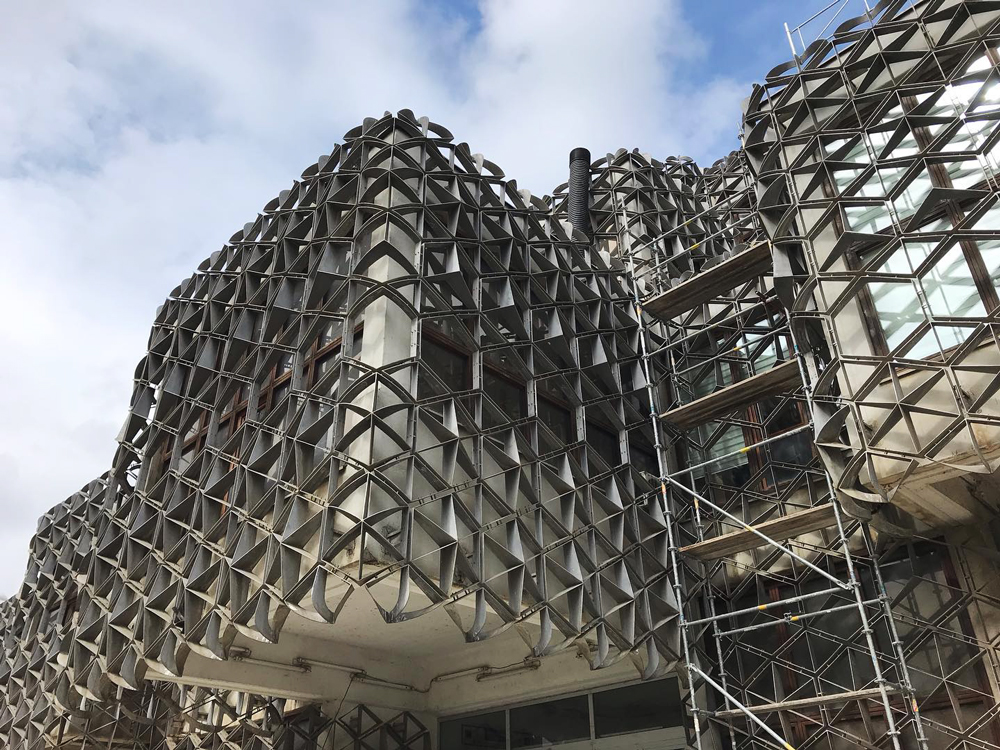
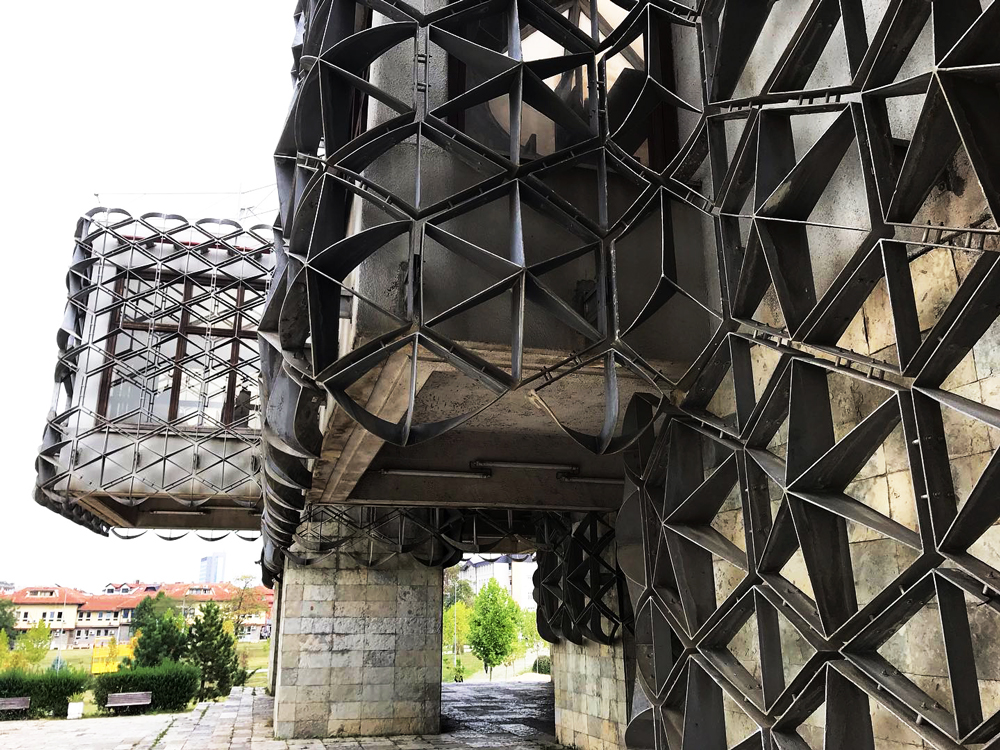
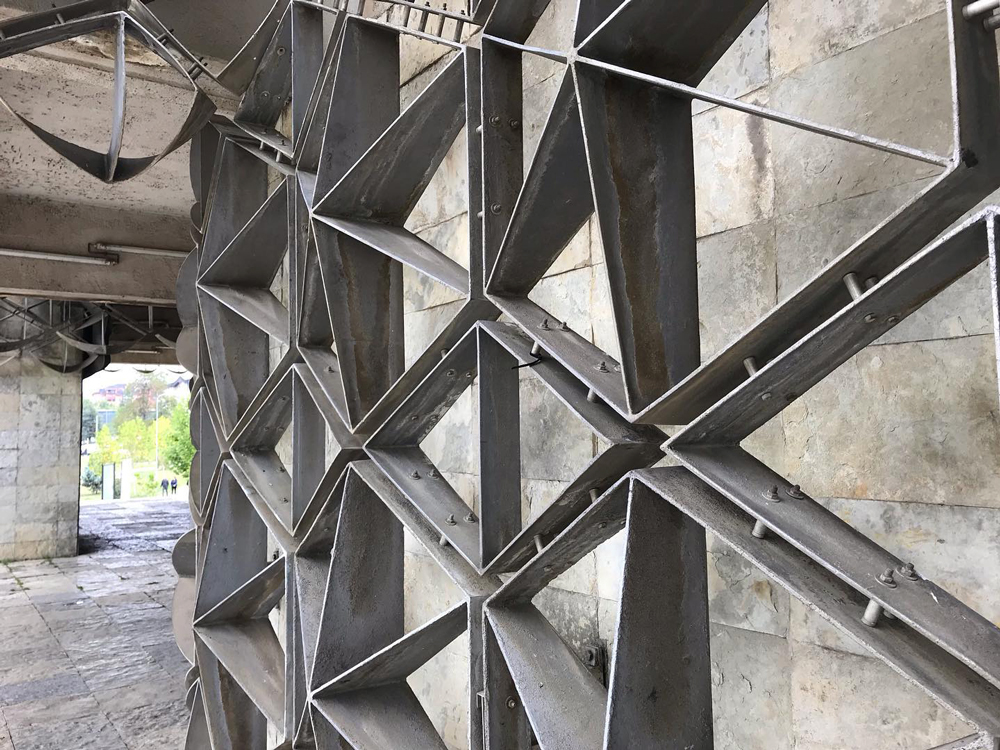
A seven-hour overnight bus ride brought me from Podgorica to Pristina, Kosovo’s capital city. Pristina is small and the most famous Modernist buildings are easily reachable by foot from Bulevardi Nënë Tereza, the main, pedestrianised thoroughfare.
The National Library of Kosovo is sometimes described as “the world’s ugliest building” or “prison-like”. I disagree. I think the Croatian architect Andrija Mutnjaković had designed an unreplicable, futuristic and bold masterpiece. It incorporates the geometries found in Kosovo’s main religions – the cubes and domes are found in Orthodox and Catholic cathedrals, and in mosques. The aluminium skin that wraps its façade represents a fishnet or veil. Although the library appears to be imposing and huge in photos, it is much smaller in real life, only three storeys above ground.
While the exterior is fascinating, do not forget to explore the interior too. The glass domes effectively bring natural light into the atrium and reading rooms. The library’s walls are decorated with striking mosaics and there are rectangular wooden frames in place of a typical staircase railing.
Within the Palace of Youth and Sports in central Pristina, only the smaller sports hall on the right is used as a professional basketball court. The larger one on the left was destroyed by a fire in 2000 and has been relegated to a large indoor carpark, while its grandstands seem to lack maintenance.
Find Ian on Instagram at www.instagram.com/hek.va
He’s promised to return to his blog about architecture he discovers on his travels, so we’ll keep a lookout for it!
Ian recommends the Romania-based BACU’s (Art and Urban Research Bureau) interactive map of Socialist Modernist buildings
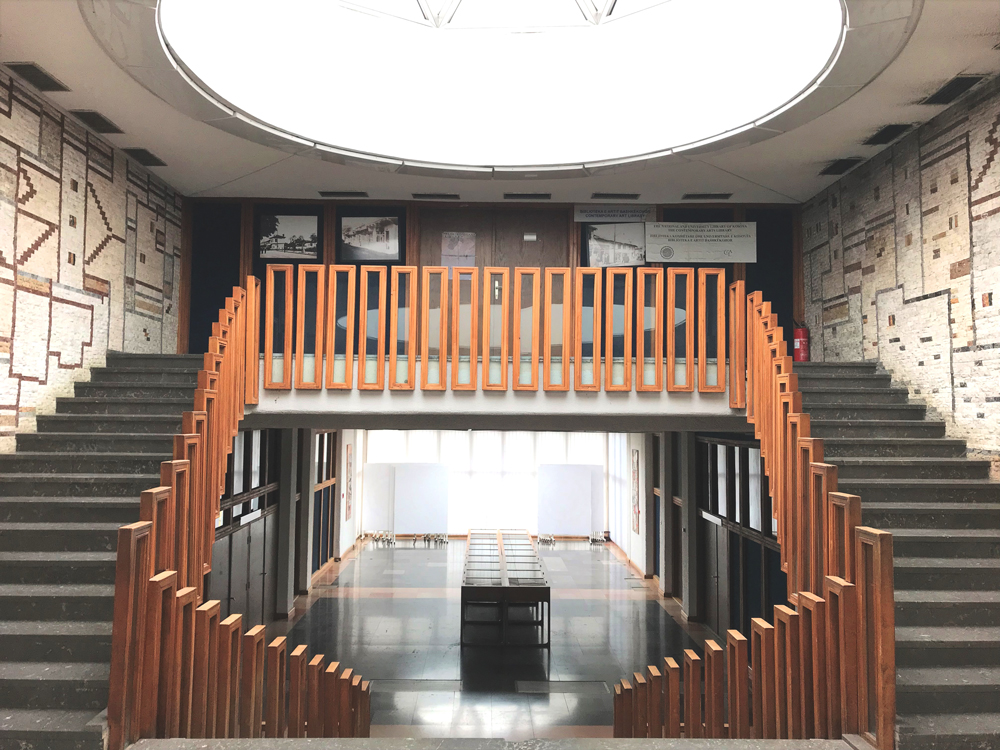
National Library of Kosovo Interior staircase
Greyscape need to know stuff
There are several ways to spell the capital city Prishtinë / Prishtina Priština or Приштина
Good reads:
The Future of Nostalgia by Svetlana Boym
Landscapes of Communism by Owen Hatherley
Secondhand Time, and Boys in Zinc by Svetlana Alexievich
Highly rated destinations (in alphabetical order):
Berlin, Hong Kong, Kyiv, London, Moscow, Tokyo, Shanghai, Singapore, Yerevan
Favourite question:
Where are you from? / Where is <person> from?
I think moving from Hong Kong to Singapore at a young age has made me acutely sensitive, conscious and curious about identities and sense(s) of belonging. In this age of globalisation and mobility, there is often no simple answer to this simple question. Is it the city where you were born? The place where you grew up? The passport that you hold? The place where you’ve spent most of your life in?
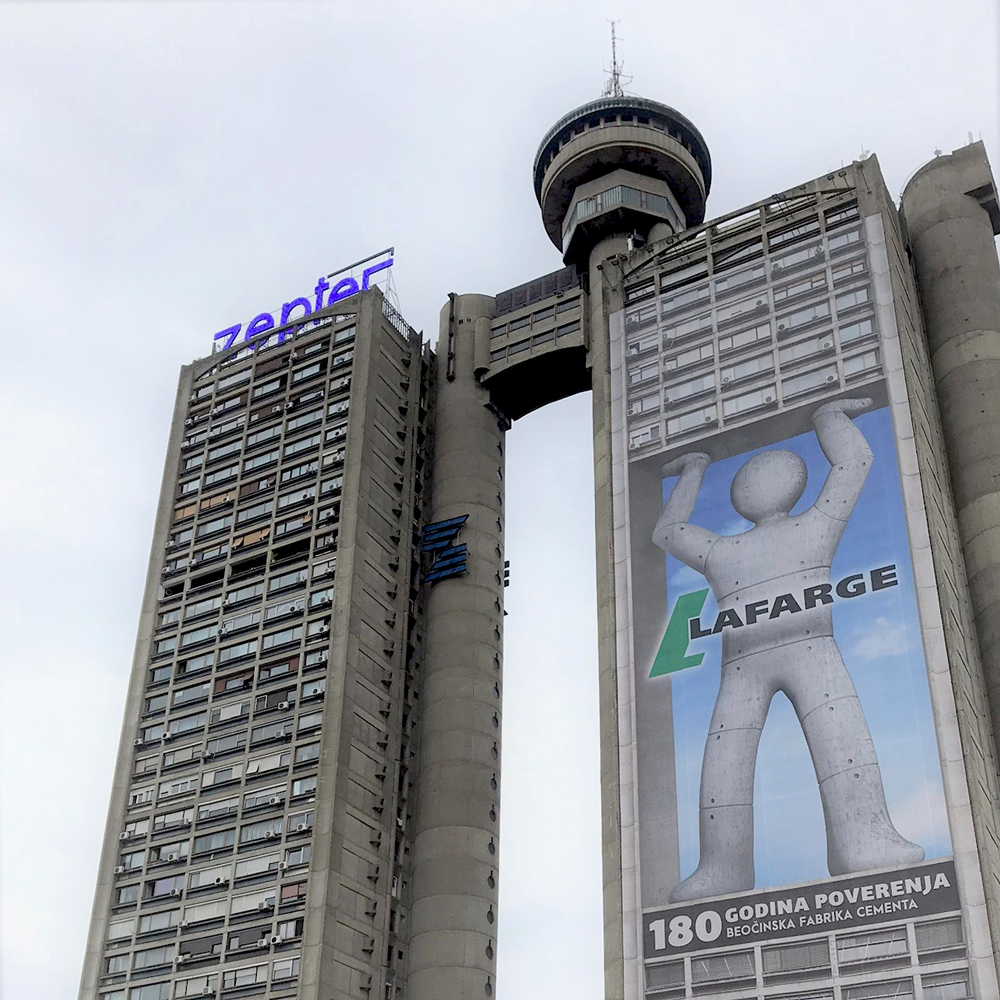
Genex Tower, Novi Beograd
FAQ: What does “hekva” mean?
It does not mean anything. Really:)
The exhibition we all need to see?
Well now it is one that got away – the 2018/9 MoMA NYC exhibition “Toward a Concrete Utopia: Architecture in Yugoslavia, 1948–1980”
All images Copyright of Ian Lo ©
GREYSCAPE LOVES




